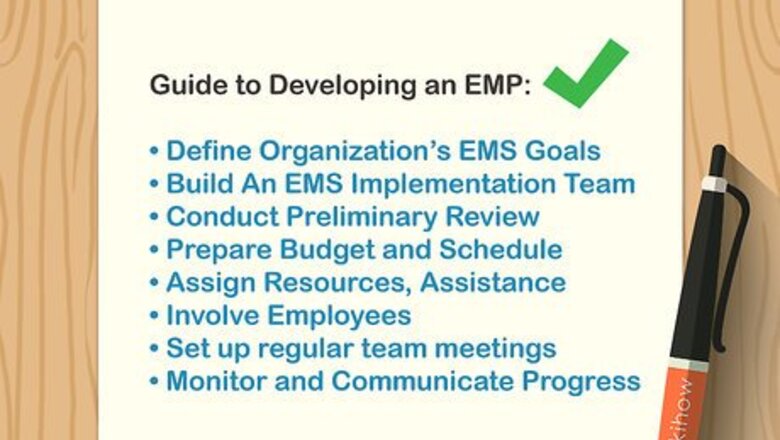
views
Setting Goals and Defining Your Policy

Identify environmental regulations you need to comply with. At a minimum, your EMP should ensure your organization is compliant with all environmental regulations that govern the area where your organization operates. You may be looking at federal, state, and local regulations. Find regulatory information online by searching for the word "regulations" along with the name of your industry or sector. For example, in the US, federal regulations are grouped by the sector or industry they cover. If you owned a furniture building company, you would look for regulations that cover the furniture manufacturing sector.Tip: If you have difficulty finding the applicable regulations, or have questions about how to ensure your organization is compliant, an attorney who specializes in regulatory law may be able to help you.

Determine if any grants or tax breaks are available. If there are grants or tax breaks available in the region where your organization operates, these may help you set goals. Since grants and tax breaks are typically offered if you exceed regulatory minimums, they provide incentives to set your goals beyond mere compliance. For example, your government may have grants available to help your organization switch to sustainable fuels or install solar panels. If you were initially planning to convert 50 percent of your power to sustainable fuel, the grant might enable you to convert 100 percent of your power. If your organization meets the qualifications for an environmentally sustainable business, there may be tax credits that you can claim on the organization's taxes.
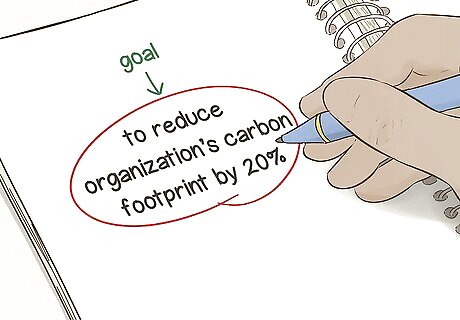
Set clear, measurable goals for your EMP. Once you have a good understanding of what is required of your organization legally, you're ready to decide what you want your organization to accomplish. If you're not already compliant, make that an initial goal. Then think about how much further you would like to go beyond mere compliance. For example, you might set a goal to reduce your organization's carbon footprint by 20 percent in the next 5 years. To measure this, you would need to get a solid estimation of your organization's current carbon footprint, as well as various changes you could implement to lower it. Keep in mind that almost any goal can be made quantifiable. For example, if you wanted to improve your company's image as a friend to the environment, you could conduct a poll to find out what the public currently thinks of your company. If 50 percent of those polled said they strongly felt that your company was environmentally friendly, you could make it your goal to increase that to 70 percent.
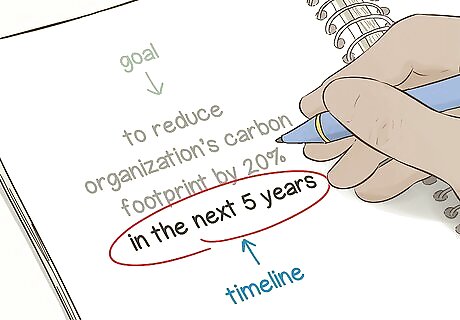
Establish a timeline for the achievement of your goals. Review the resources available to implement your EMP and make a reasonable estimate of how long it will take your organization to achieve your goals. Set smaller benchmarks along the way so you know if you're on track towards achieving your goal by the deadline. If you're not sure how long it will take you to achieve the goals laid out in your EMP, or if you think you're being too ambitious, research other organizations in your industry and find out what they did. You may even be able to find other organizations' EMPs online that you can read over and compare to your own.

Create an environmental policy for your organization. Your environmental policy is a declaration of the basic environmental principles you intend to uphold as an organization. It doesn't have to be long or complicated. However, it should directly communicate your organization's environmental values and how you accomplish them. Your environmental policy is the underpinning and guiding philosophy behind your EMP. Your environmental policy should also include a basic statement that your organization intends to comply with all existing and future laws, regulations, and standards that are applicable to your business. For example, if you own a company that builds furniture, your environmental policy might be "Here at Fancy Feat Furniture, we focus on creating quality, durable furniture that will last a lifetime while also protecting the Earth. To accomplish this, we use organic and sustainable materials, dyes, and finishes. We follow through with this commitment by maintaining strict standards that exceed regulatory requirements in our industry."Tip: Your environmental policy is customer-facing information. Include it on your company's website or social media pages.
Compiling Your Environmental Manual
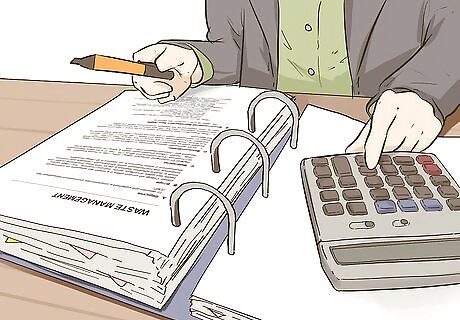
Organize your goals into specific sections. Your environmental manual includes the specific documents and procedures that will help you carry out your EMP. Set up your manual by dividing your goals into sections. Each section should relate to a distinct environmental area, such as waste management, air pollution, or sustainable sourcing practices. Then compile the related supporting documents into each of those sections. Typically you would use a large 3-ring binder or similar organizer for this purpose. A 3-ring binder allows you to easily add and remove documents as necessary. Include plastic slipcovers for regulatory documents, such as licenses and permits, that you don't want to punch holes in.
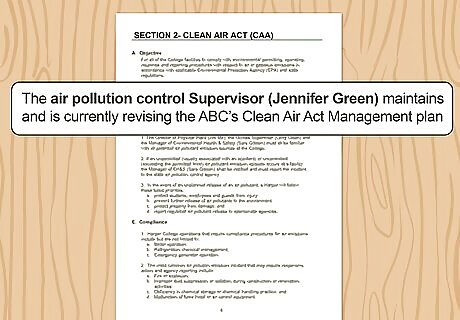
Provide a summary index on the first page of each section. On the summary index page, list the person in charge of this area of the plan, the regulations that apply, your organization's compliance status. Add a brief description of any other documents or resources, such as employee training materials, that are included in that section. If permits or licenses are required, list them along with contact information for the issuing agency. If you have permits or licenses that have to be renewed, include the dates of renewal. If you're required to maintain records related to your compliance, add a list of records that need to be kept and how long you're required to maintain them.
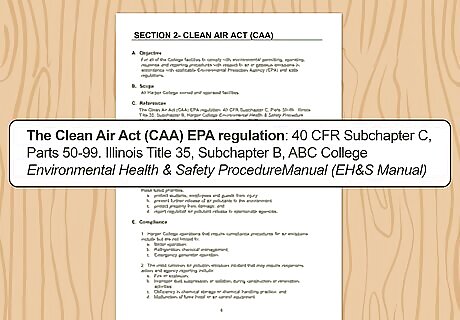
Outline the requirements of applicable laws and regulations in each major area. Take the environmental laws and regulations you've found and create a summary that specifies exactly what is required for your organization's compliance. Include information on whether you are currently compliant or working toward full compliance. If you're currently working toward full compliance, list any inspections that must be completed as well as contact information for the regulatory agency that would complete those inspections. File any licenses or permits you have that demonstrate compliance with environmental laws and regulations behind your outline.Tip: If the applicable laws and regulations are complex, or require significant resources to ensure compliance, you may want to hire an attorney who specializes in regulatory law to make sure your interpretation and understanding is correct.
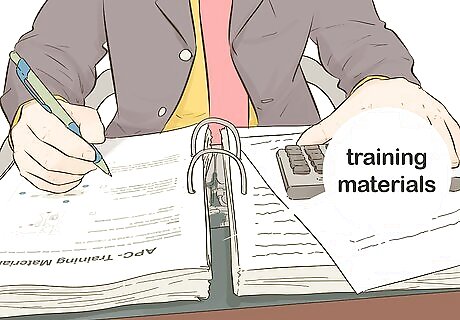
Include training materials for employees. Outline the training process and when training will take place. If employees are required to pass an exam or get a particular certification, file those documents in your environmental manual along with the training materials. A spreadsheet enables you to tell at a glance which employees are up-to-date on their training. For example, you may have full training for new hires and refresher training for all employees once every 6 months. Your spreadsheet would list the name of each employee with columns for you to write the dates they completed full training or refresher courses. If employees need licenses or permits, include those documents along with the date when they have to get them renewed.
Implementing Your Plan

Organize a team to implement your EMP. The size of your team will depend on the size of your organization as a whole as well as the scope of your overall plan. However, the team should ultimately include management-level leaders as well as a few regular employees. For some managers, participation on the team will be mandatory. For others, start by asking who is interested in joining the team. Employees who are passionate about the environment can be tremendous assets on an EMP implementation team. Update your environmental manual after the team is in place, if necessary. For example, you may need to update the names of the employees in charge of compliance in each area.
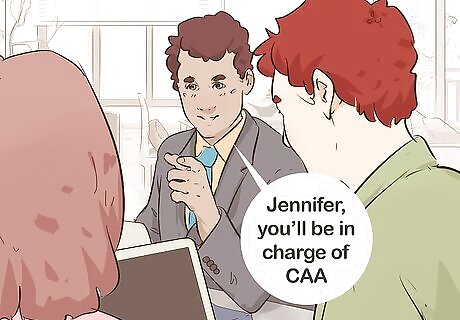
Assign specific responsibilities to all employees. Implementing your EMP requires all of your employees to be on board. Giving them specific responsibilities will make them feel like an active part of the team. Make sure each employee understands how your EMP specifically affects their job within the organization. For example, if you run a furniture shop, you may put the shop supervisor in charge of training all new employees who will be building furniture. Through that training, each employee will learn their specific responsibilities regarding your EMP.

Secure resources to implement the plan. Review your current levels of compliance along with your team. Figure out what exactly needs to be done to bring your organization into compliance and achieve the goals in your EMP. Then you can draft a budget that estimates the resources that will be needed to complete the plan. Follow your timeline with your budget, providing estimates of resources needed to achieve each of the benchmarks you created. Where possible, break down the total resources needed to show specific amounts for each task that is necessary to reach the benchmark. For example, suppose each of your employees needs an environmental certification. The certification costs $250 and requires 18 hours of training followed by a 1-hour exam. Your total budget for that certification would be 19 hours of work at whatever rate each employee is paid (unless they are salary) plus $250 per employee.

Set up regular team meetings to evaluate your progress. When you first begin the implementation process, meetings may be as frequent as once a week. Once everything is set up, the team may only need to meet once a month or once a quarter. At a minimum, the team should meet at least every week a benchmark is scheduled on your EMP timeline. The team member in charge of that particular section would prepare a report on whether that benchmark was reached and any problems that were encountered.Tip: Your EMP is not set in stone. If you later learn that you underestimated the time it would take to achieve the goals in your EMP, you can almost always go back and adjust it. The only exception would be if you had to meet a legal deadline.

Communicate your progress on the plan to interested parties. The people or entities that are interested in your progress depend on the scope of your project and the level of regulation. You may need to notify contractors, suppliers, and customers. Generally, this would include anyone directly affected by your EMP. For example, if you owned a furniture manufacturing business, you would want to notify suppliers of wood for your furniture when you transitioned to using only organic wood products. As your organization progresses towards becoming more environmentally friendly, you'll likely also want to tell the public about it. When you reach a substantial benchmark, prepare a press release or post about it on your organization's social media accounts.
















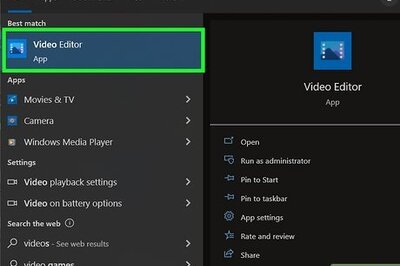
Comments
0 comment